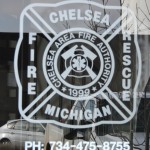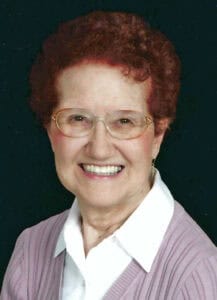 Chelsea Area Fire Authority Chief Rob Arbini attended the July 10 Lima Township Board meeting to talk about the possibility of a millage increase for those served by CAFA.
Chelsea Area Fire Authority Chief Rob Arbini attended the July 10 Lima Township Board meeting to talk about the possibility of a millage increase for those served by CAFA.
The current millage is 1.8, and the CAFA board has discussed both a 2.1 millage (for an additional $245,000 a year) and a 2.4 millage (for an additional $489,797 a year).
Arbini said that with a 2.4 millage, homeowners in the CAFA district would pay $2.40 per $1,000 of taxable value or about $60 more a year beginning in 2019. The proposed millage is for the next five years.
Arbini said that he sees the benefit of 2.4 mills and gave a number of examples of decisions that he has to make based on the number of firefighters CAFA currently employs.
“I’m going to do the best I can with what I have,” said Arbini. “I want to give the best possible service to citizens.”
Lima Township Supervisor Craig Maier, who serves on the CAFA Board, said, “CAFA’s auditor feels we’re not sustainable. Our cash fund should be $600,000 plus. Currently we’re at $350,000.”
Maier said that CAFA currently spends close to $20,000 a year on interest.
“2.4 mills would give us the funding to pay cash for equipment and give us a staff of four firefighters 24/7,” said Maier. “Four firefighters means two in a home and two out who could potentially go in and rescue them.”
CAFA’s next meeting is July 18 at 9 a.m. at Chelsea City Council Chambers, and anyone interested in learning more about the proposed millage is invited to attend.
In a split decision of 3-2 (Nanette Havens and Duane Luick against) the board approved a funds request not to exceed $18,000 for Midwest Consulting to do an engineering study and conceptual site plan of the Lima Township Hall property to determine what the options are regarding constructing another building on the property. Havens and Luick, who received two lower bids, wanted to go with another company, but Maier’s choice prevailed based on familiarity with Midwest Consulting.
In other news, Maier said that the township saved 19 percent on stone purchased for road construction projects, which should afford the township enough material to finish the other half of South Lima Center Road.















It appears that the two-in two-out requirement is the driving force behind this millage. It’s important to understand that this DC policy (OSHA 29 CFR 1910.134(g)(4)(i) is intended for the protection of firefighters, not for better fire suppression and rescue services. OSHA does not take implementation costs into account when regulating. I think we should.
In any case, it might be useful to ask, does the Authority currently operate under a two- /two/out policy, and when was the last time such a situation was encountered at an actual rescue?
Rod Anderson
PS WRT the $20,000 for interest. My recollection is that our reserve fund generated much more interest revenue than this. Of course, our reserve fund was a lot larger then….
Mr. Anderson,
The past few days I attended the Lima and Lyndon Township Meetings to talk about the millage. I can say, without reservation, that the two-in/two-out is not the driving force behind the future millage vote. Here are the driving forces:
Budget – In 2012 (-$155,813), 2013 (-$211,541), 2014 (-$67,835), and 2015 (-$248,338), CAFA operated in the red. In 2016, CAFA operated in the black, per the PHP audit, with a surplus of $100,730.28. What the audit report doesn’t reflect is that CAFA was short personnel due to retirements and a layoff which was a cost of approximately $70,000. Over the last few years, CAFA spent over $15,000 to purchase firefighter turnout gear, self contained breathing apparatus (scba’s), fire hose and education for three (3) personnel for an investigator class. The purchase was done as part of a regional grant with other departments in Washtenaw County. If we would have not been part of this grant, we were looking at spending nearly $150,000. The initial millage of 1.8 is nine years (9) in the running.
Personnel – CAFA went to full time personnel in 2006. Over the years, CAFA has built up a compliment of 9 full time firefighters that operate on a 24-hour shift coverage. I bring this up because CAFA had a compliment of 39 paid-on-call firefighters to support the full-time staff. As of 7-13-2017, CAFA has 2 paid-on-call personnel. When an alarm comes in, CAFA is struggling to have support personnel to respond. This is not just fire calls I’m alluding to. The calls could be vehicle accidents on I94 or a bicycle accident on the new DTE trails in Lyndon Township, which we recently spent two (2) hours looking for a citizen that was hurt on the trails.
CAFA has three (3) personnel per shift. When a call comes in for a citizen in need (CPR, stroke, diabetic emergency, pedestrian hit by a vehicle, etc.), we respond with a minimum of 2 personnel. That leaves one (1) firefighter to respond to the next call if one were to happen in that same time frame.
OSHA Standard (et al) – With reference to the OSHA standard, your are correct when you stated that OSHA does not take implementation costs into account but CAFA does. If CAFA responds to a scene and operates in an Immediate Danger to Life and Health (IDLH) atmosphere, we are held to the standard. We may deviate from it but that is not the ideal situation. However, such deviations from the regulations must be exceptions and not defacto standard practices. In fact, OSHA may still issue “de minimis” citations for such deviations from the standard, meaning that the citation will not require monetary penalties or corrective action. The exception is for a known life rescue only, not for standard search and rescue activities. When the exception becomes the practice, OSHA citations are authorized. [29 CFR 1910.134(g)(4)(Note 2)] ref: http://www.iaff.org/hs/PDF/2in2out.pdf.
There many more standards that CAFA does not have a say in either. NFPA 1500 states that all structural firefighting gear shall be retired after 10 tears from the date of manufacture regardless of the amount of usage.
CAFA does operate under a 2 in-2 out policy. It is referenced as our Rapid Intervention Team standard operating guideline (SOG). We recently used the policy while we were doing a training burn on June 11th. Prior to that, we utilized it in Scio Township and in Lima Township within the last 2 months at structure fires.
I hope I answered some questions or concerns that you may have had regarding the issues of the upcoming millage vote. If you would like some more information regarding these or any other issues regarding CAFA, I welcome your call, email, or visit to the fire station.
Thank you for the information Chief Arbini. Well said and well put. As a citizen of Sylvan township and living in the area that CAFA protects, you have our support!
Chief
Many thanks for your detailed response. I will perhaps have a response after digesting it. In the meantime, here are a couple “global” question re the proposed increase:
– Passage of the first CAFA millage was followed by the Great Recession of 2008, leading to a decline in taxable value over the next few years. In spite of this unforeseen decrease in revenue, CAFA was able to operate successfully and even increase its reserve fund. Why can’t we expect the Authority to function without additional funding in the current fiscal environment, in which significant increases in TV can be anticipated?
– In today’s technological society, we are used to getting more bang for our buck. Somehow that doesn’t seem to apply to firefighting. Why is this?
Finally, I note that the news article says the next CAFA meeting is on the 18th, but the CAFA web site says meetings are held on the 4th Tuesday, which would be the 25th. (Lisa, maybe this is a question for you.)
Rod Anderson
The next CAFA meeting is tomorrow, Tuesday, July 18 at 9 a.m. at the Chelsea City Council Chambers.